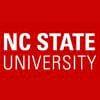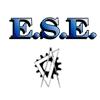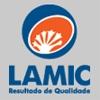Explore all the information on
NIR - Feed analysis
Welcome to the page about NIR - Feed analysis of Engormix; a source of knowledge on NIR - Feed analysis.
Introduction The implementation and monitoring of quality control, quality assurance systems, and their standard operating procedures in feed mill operations are integral in assessing the overall success and profitability of livestock operations. The proper sampling of finished feed and its subsequent analysis is a common standard operating procedure that is used for most swine nutrition studies to ensure that adequate diet manufacturing and delivery have been met; therefore,...
Comments : 0
Recommendations: 0
The online course is taught through the Moodle platform of the University of Córdoba (UCO), which organizes it in collaboration with the International Society for NIR Spectroscopy (ICNIRS, http://www.icnirs.org/).
The course is taught in English and has a teaching load of 6 ECTS and includes theory classes, practical exercises, interactive self-learning tools, virtual visits to laboratories, etc.
Students who complete the course will have the following...
Comments : 0
Recommendations: 0
Near infrared reflectance spectroscopy (NIRS) is nowadays a common tool to analyze the nutritional content of feedstuffs. Corn hybrids and drying temperatures could affect the nutritional value of the grain. It is important to determine if these factors are detected by NIR. Two corn hybrids (Dekalb 68-05 and Dekalb 65-20) varying in kernel hardness (average and hard respectively) were dried at three temperatures (35, 80, and 120°C) to investigate the effects on its nutritional content....
Comments : 0
Recommendations: 1
Marcela Drago, Lab & Regulatory Affairs Manager, Evonik Animal Nutrition, explains how Evonik has developed AMINONIR® services to achieve specific calibrations for the prediction of crude protein, dry mater, essential, and non-essential amino acids for all major feed ingredients, during OVUM 2019 in Lima, Peru....
Comments : 0
Recommendations: 5
The course is online through the Moodle platform of the University of Córdoba (UCO), which organizes it in collaboration with the International Society of Spectroscopy NIR (ICNIRS, http://www.icnirs.org/).
The course is taught in English and has a teaching load of 6 ECTS and includes theoretical classes, practical exercises, interactive self-learning tools, virtual visits to laboratories, etc.
Students who complete the course will have the following...
Comments : 0
Recommendations: 0
Our increasingly detailed knowledge and understanding of the nutritional needs of production animals means we now have the potential to provide feeds which optimise health, growth, and hence, financial return. Near Infrared Spectroscopy (NIRS) has provided the feed industry with the means to meet that potential by accurately measuring key nutritional components, such as essential amino acids, in feed ingredients as they arrive at the feed mill, and finished feeds as they leave. This fast,...
Comments : 0
Recommendations: 4
Ashley Stephens, Technical Service Manager, Poultry Nutrition at Evonik Animal Nutrition, speaks about the main aspects of AMINONIR®. Evonik has developed specific calibrations for the prediction of crude protein, dry mater, essential, and non-essential amino acids for all major feed ingredients....
Comments : 2
Recommendations: 9
A new buzz-word is rapidly spreading through the manufacturing and analytical environment. Discussions on the application of Near Infrared (NIR) Spectroscopy are often found on the agenda of production, project, technical and even board meetings. Engineers and chemists are confronted more frequently with the challenge to decide whether a NIR instrument will be the solution to their production quality control and other analytical problems. Are there really amazing machines that can determine...
Comments : 0
Recommendations: 0
Dr. Andy Komarek (ANKOM) discussed methods for determining fiber content in DDG, among other topics, during the 22nd Annual Distillers Grains Symposium in Des Moines, Iowa....
Comments : 1
Recommendations: 3
Evonik has rolled out a high-precision NIR analytical service, which enables the content of raw, unground feed materials to be assessed as soon as they arrive at the mill.
The amino acid and macro-nutrient content of samples can now be analyzed quickly, straight from the delivery truck, cutting out the time-consuming...
Comments : 0
Recommendations: 5
Pegasus, in the Greek mythology, was the winged stallion that carried the thunderbolts of Zeus. Thunderbolts represent light and speed, simultaneously. To obtain speed in the risk management of mycotoxins is, today, a reality within the field of business. Management of mycotoxins The technical concepts that involve the animal losses caused by the mycotoxins have already been established, especially for those species with an economic value. Proper monitoring of...
Comments : 2
Recommendations: 2
Diego Martínez Patiño-Patroni (Ilender Corp.) shared the findings of two posters presented during IPPE 2018 in Atlanta, USA....
Comments : 3
Recommendations: 2
The course, coordinated by Professor Ana Garrido Varo, requires a workload of 6 ECTS. The theoretical lectures, practical exercises, interactive self-learning exercises and tools, virtual visits to laboratories, etc. cover basic NIR concepts, such as applications of NIR in a variety of situations in private and public enterprises. By completing the course the student will achieve the following learning outcomes:
• a basic, theoretical and practical...
Comments : 3
Recommendations: 0
Richard Sellers (American Feed Industry Association) and Steven Ricke (University of Arkansas) discuss a new research project that will analyze whether animal feed contains serotypes from Salmonella that could pose a health threat to livestock....
Comments : 1
Recommendations: 2
Introduction Dr. David Mertens (2012), USDA-DFRC, proposed that the five most important nutritional measurements for hay crops are: dry matter (DM), ash, amylase-treated neutral detergent fiber (aNDF), some measure of digestibility or energy value, and crude protein (CP). More and more, these parameters can be estimated on-farm, or at least one can receive a flag as to when a parameter has changed. ...
Comments : 0
Recommendations: 1
DDGS can be used in poultry and swine feeds, provided that its quality meets nutritionist's expectations. As an industrial by-product from the ethanol industry, its composition may vary not only among suppliers but also in the course of time, depending on the cereals coming in and technological management of the plant. Therefore, we strongly recommend controlling DDGS quality as frequently as possible. NIR (Near Infrared Reflectance) offers the possibility to...
Comments : 1
Recommendations: 1
I. INTRODUCTION Rapid assessment of the quality of feed ingredients is now crucial for the financial success of intensive livestock producers. A great deal is known about the nutrient requirements, factors determining feed intake and the negative impacts of anti-nutritional factors for all intensively reared livestock including poultry. Diets formulated for optimum performance and profitability need to meet, but not...
Comments : 2
Recommendations: 0
In animal feed production, accurate measurement and fine-tuning of the moisture content in the ongoing process ensures a consistently high product quality, reduces the operating costs, and increases margins. The moisture content of animal feeds to a great extent determines the quality of the end product and the margins that a feed producer can achieve. Though the maximum moisture content of feeds is prescribed by law, their...
Comments : 1
Recommendations: 0
I. INTRODUCTION The nutritional value of feed ingredients comprises all nutrients needed for maintenance and production of animals. This paper mainly focuses on the energy value of feed ingredients, which depends on the nutrient composition (starch, fat and protein), the efficiency of nutrient digestion and absorption in the intestinal tract, and the presence of anti-nutritional factors (ANFs). Although the composition of...
Comments : 1
Recommendations: 0
I. INTRODUCTION Cereal grains used by the poultry industry in Australia vary widely in available energy and protein content which is often reflected as variation in bird performance because standardised ingredient values are used for diet formulation. Rapid or real-time techniques for measuring the AME content of grains for birds will assist the purchase of grains at appropriate prices and the accuracy of feed formulation...
Comments : 0
Recommendations: 0


.jpg&w=3840&q=75)





.jpg&w=3840&q=75)













